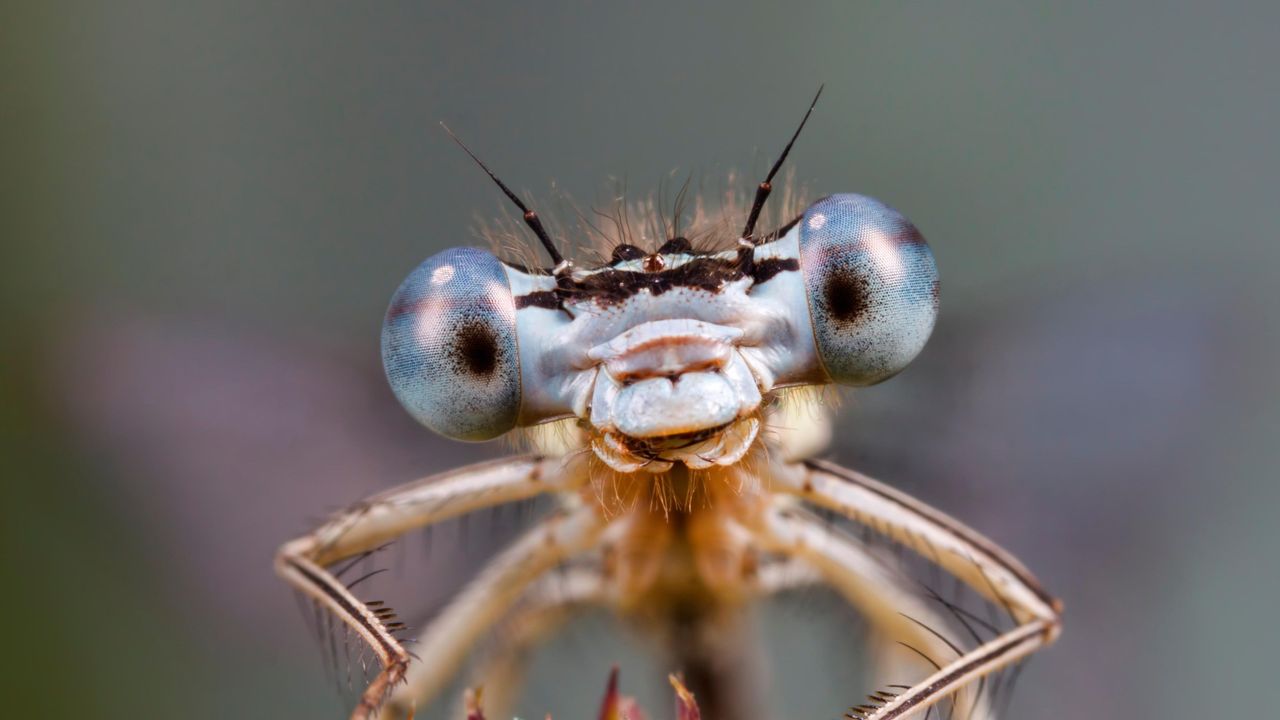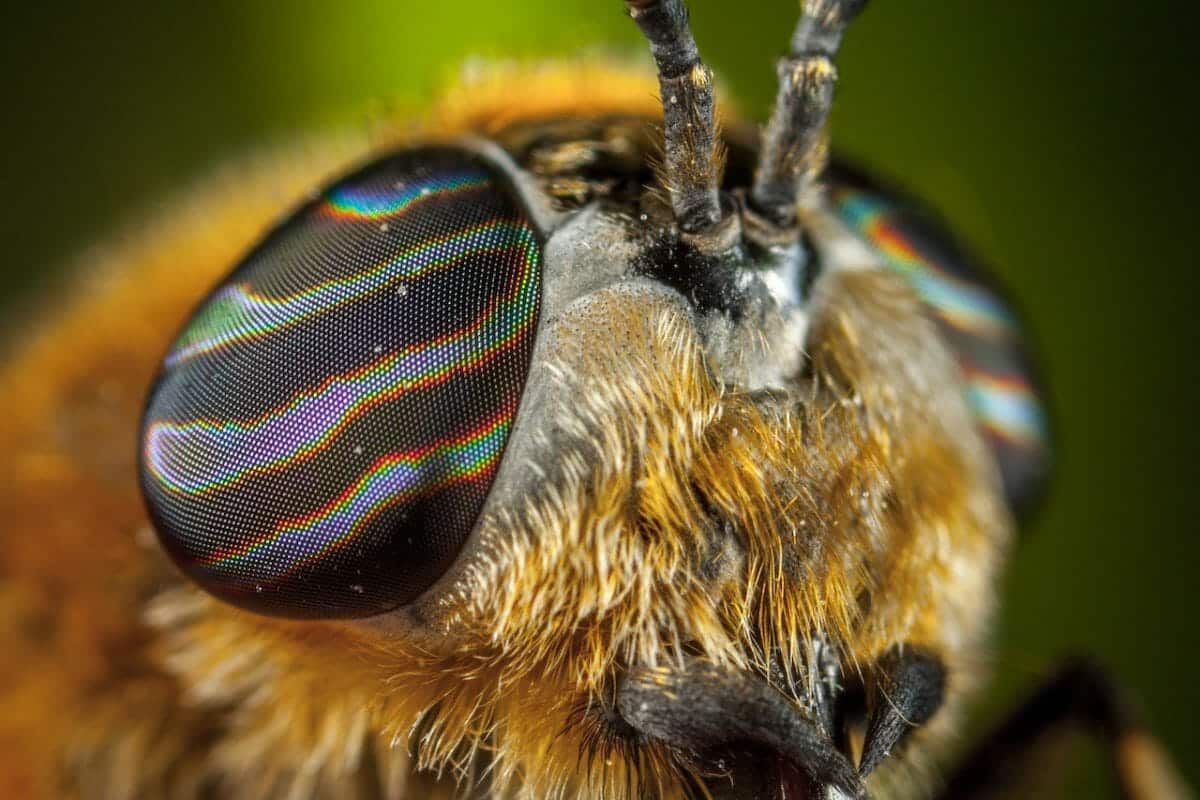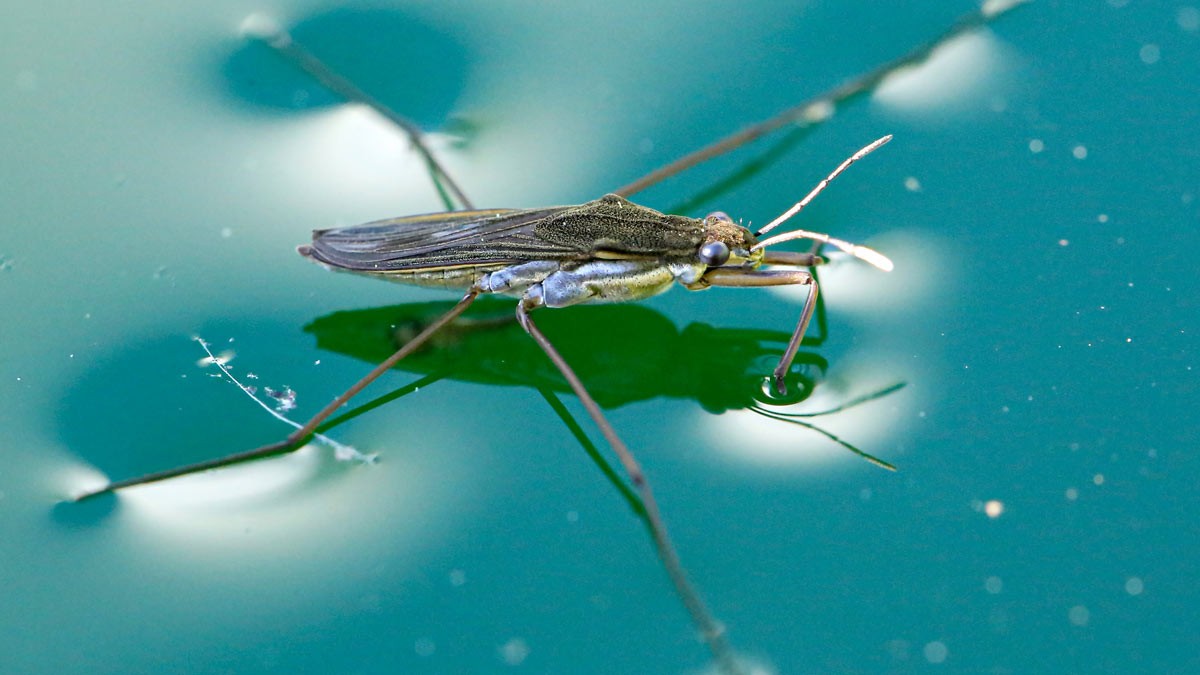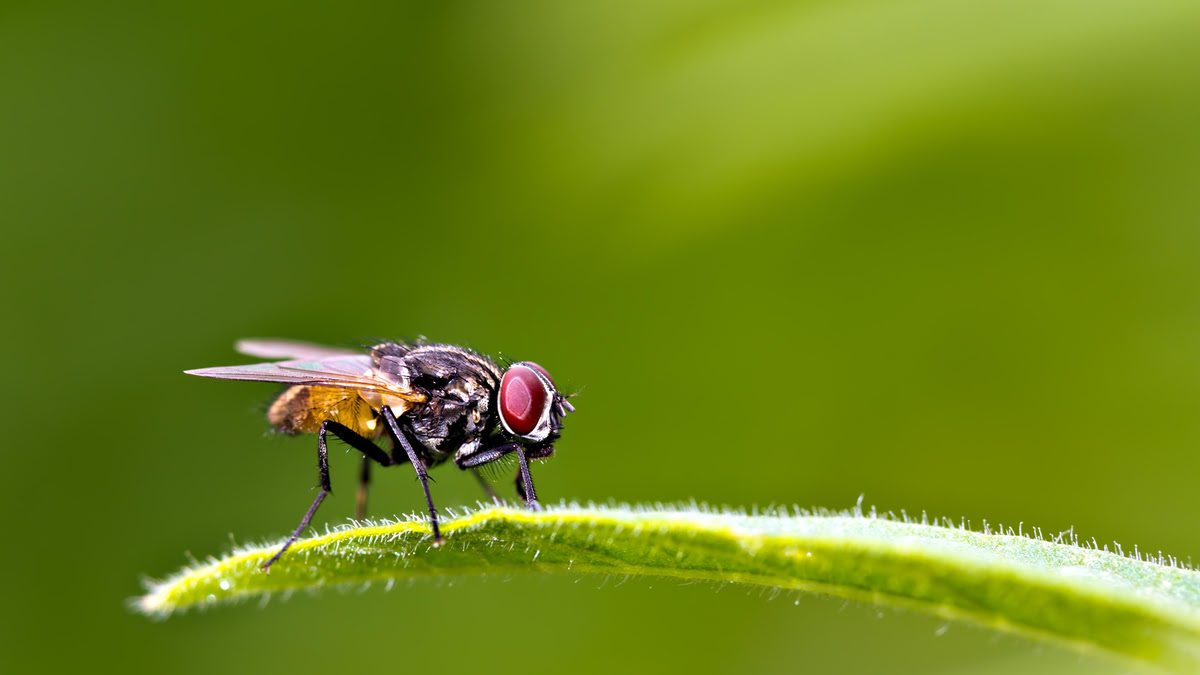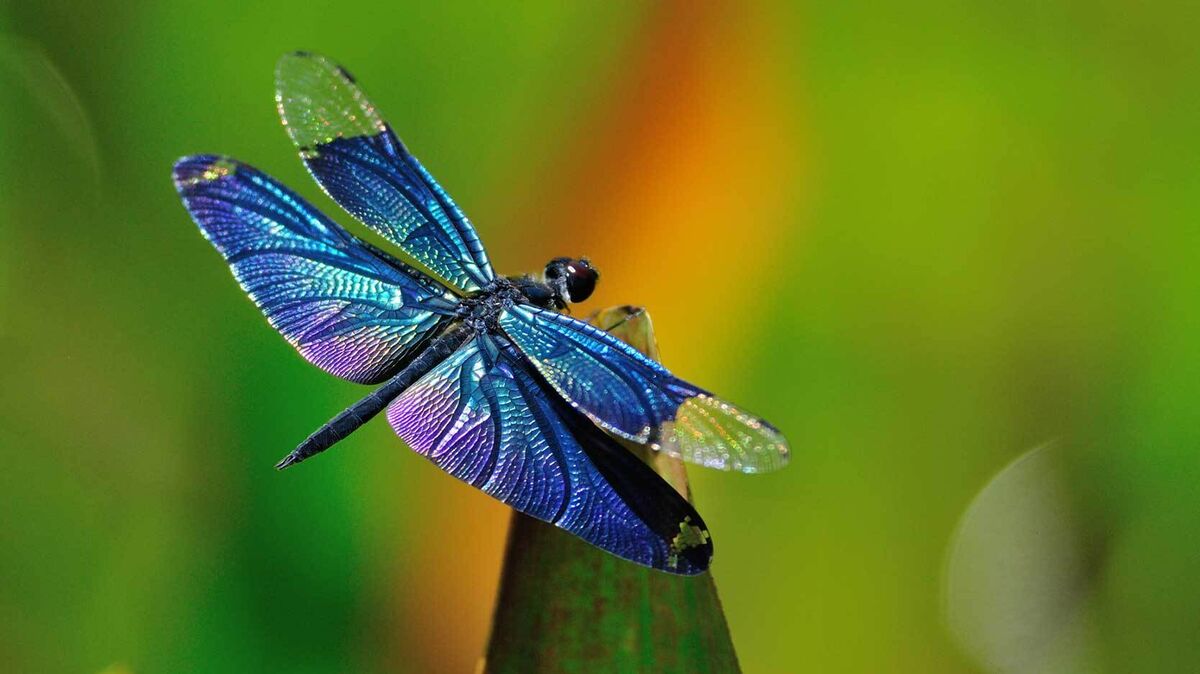Home>Gardening News and Trends>Latest News>How Do Insects Move


Latest News
How Do Insects Move
Modified: January 22, 2024
Learn about the latest news on how insects move and explore their fascinating locomotion techniques. Discover the wonders of insect mobility in this informative article.
(Many of the links in this article redirect to a specific reviewed product. Your purchase of these products through affiliate links helps to generate commission for Chicagolandgardening.com, at no extra cost. Learn more)
Table of Contents
Introduction
When it comes to the animal kingdom, insects are among the most diverse and fascinating creatures. From the crawl of a caterpillar to the flutter of a butterfly, insects have developed incredible ways to move and navigate their environments. Understanding how insects move is not only a topic of scientific curiosity, but it also provides valuable insights into their survival and adaptation strategies.
Throughout history, humans have been intrigued by the various methods insects employ to move from one place to another. By studying their locomotive abilities, scientists have gained a deeper understanding of the physical adaptations, behaviors, and mechanisms that enable these tiny creatures to traverse different terrain, whether it be on land, in the air, or even in water.
While there are over a million known species of insects, each with its own unique characteristics, we can categorize their movement into several distinct types. From soaring through the air to crawling along the ground, insects have evolved specialized adaptations that allow them to excel in their specific method of locomotion.
In this article, we will explore the different ways that insects move, examining the remarkable techniques employed by flying insects, crawling insects, jumping insects, swimming insects, and walking insects. By delving into the mechanics of each mode of movement, we can gain a greater appreciation for the ingenuity and diversity of insects.
Flying Insects
Flying insects, such as bees, butterflies, and dragonflies, have the remarkable ability to take to the air and soar through the skies. Their ability to fly is powered by a set of specialized adaptations and complex flight mechanisms.
One of the key features that enable insects to fly is their lightweight exoskeleton. Unlike vertebrates, whose internal skeletons add weight, insects have a hard outer shell made of chitin, which provides structural support while remaining lightweight. This allows them to lift off the ground and stay airborne with relative ease.
Flight in insects is achieved through the use of their wings. Most flying insects have two pairs of wings, with the forewings and hindwings connected by a flexible membrane. The wings beat in a synchronized pattern, generating lift and propelling the insect forward.
Flapping their wings at a rapid rate, flying insects create enough thrust to overcome the force of gravity. The shape of their wings, which is often elongated and curved, allows for efficient aerodynamic lift and maneuverability.
Furthermore, flying insects have developed specialized flight muscles that enable them to maintain steady and controlled flight. These muscles, known as indirect flight muscles, are attached to the wings and contract rapidly to produce the necessary wing movements for flight.
Insects also utilize a variety of flight strategies to navigate their surroundings. Some insects, like bees and butterflies, use a hovering technique to stay stationary in mid-air, while others, like dragonflies, excel in swift and agile flight to catch prey.
Overall, the ability of flying insects to conquer the skies is a testament to their incredible adaptations, unique flight mechanisms, and efficient use of energy. Their mastery of flight allows them to explore vast territories, find resources, and engage in essential life activities such as mating and foraging.
Crawling Insects
Crawling insects, such as ants, beetles, and centipedes, have evolved remarkable adaptations to navigate across different surfaces and terrains. While they may lack the ability to fly or jump, these insects make up for it with their exceptional crawling abilities.
One of the key adaptations for crawling insects is their segmented body. This segmented structure, along with specialized appendages, allows them to move with precision and flexibility. The legs of crawling insects are often equipped with claws or adhesive pads that help them grip onto surfaces.
Ants, for instance, have specialized leg structures that enable them to climb vertically on walls or across ceilings. Their tiny claws can grip onto irregular surfaces, allowing them to move effortlessly in intricate environments, such as a colony’s intricate network of tunnels.
Moreover, crawling insects often have specialized adaptations for walking on specific surfaces. For example, beetles have grooves on their legs that help them grip onto smooth surfaces, while geckos have microscopic hair-like structures on their feet that create an adhesive force, allowing them to climb even on vertical glass surfaces.
Some crawling insects also have the ability to move quickly and efficiently. For instance, centipedes have numerous legs distributed along their body, which allows them to move rapidly and with great agility. They use a coordinated “wave-like” motion, with their legs moving in a synchronized pattern to propel themselves forward.
In addition to their physical adaptations, crawling insects also exhibit remarkable behaviors that aid in their locomotion. For example, ants are known for their ability to navigate complex terrain by following pheromone trails left by other ants, while caterpillars use their body arching and contraction to inch forward.
Overall, crawling insects have adapted to a wide range of environments and terrains, showcasing their incredible agility and versatility. Their adeptness at crawling allows them to forage for food, establish colonies, and navigate through challenging habitats with ease.
Jumping Insects
Jumping insects, such as grasshoppers, fleas, and crickets, are known for their exceptional leaping abilities. These insects have evolved powerful legs and specialized adaptations that allow them to propel themselves remarkable distances relative to their body size.
One of the key adaptations for jumping insects is their hind legs, which are typically elongated and muscular. These legs store and release energy, similar to a spring, to create a powerful jump. Grasshoppers, for example, can launch themselves into the air using their strong hind legs, propelling themselves several times their body length.
Jumping insects also have specialized joints in their legs that allow them to control the force and direction of their jumps. By flexing and extending their legs rapidly, they can generate enough power to launch themselves into the air with precision and accuracy.
In addition to their leg adaptations, jumping insects often have wings that assist in their jumps. While wings are not typically used for sustained flight in jumping insects, they can provide additional thrust during a jump or help in steering mid-air.
Another unique adaptation in jumping insects is their ability to leap repeatedly. For example, fleas have a specialized structure that acts as a spring, allowing them to jump multiple times in quick succession. This enables them to move rapidly across their host or jump long distances to find a new one.
In some cases, jumping insects also use their jumps as a defensive mechanism. When threatened, they can quickly spring out of harm’s way, evading predators and increasing their chances of survival.
The remarkable jumping abilities of these insects are a testament to their incredible power and agility. Their adaptations for jumping enable them to navigate challenging terrain, find food, and escape danger in a swift and efficient manner.
Swimming Insects
While many insects are known for their ability to navigate through the air or crawl on land, some have also adapted to life in water. Swimming insects, such as water striders, backswimmers, and water beetles, have evolved remarkable adaptations that allow them to move efficiently and gracefully in aquatic environments.
One of the key adaptations of swimming insects is the presence of hydrophobic structures on their bodies. These structures, typically found on their legs or bodies, repel water and prevent their bodies from becoming wet. This helps them stay on the water surface and reduces drag, allowing for faster and more efficient movement.
Water striders, for example, have long and slender legs with tiny hydrophobic hairs that enable them to walk on water. These legs distribute the insect’s weight over a large surface area, preventing them from breaking the water tension and allowing them to glide effortlessly across the water surface.
In addition to their hydrophobic adaptations, swimming insects also use their legs as oars or paddles to generate propulsion in water. By moving their legs in a sculling or rowing motion, they create forward thrust and propel themselves through the water.
Some swimming insects, like backswimmers, use a different method of propulsion known as “backstroking.” Backswimmers vigorously move their hind legs in a synchronized rowing motion, propelling themselves backward through the water with great speed and agility.
Water beetles, on the other hand, have modified swimming legs that are fringed with fine hairs, creating a paddle-like structure. These legs create a large surface area for pushing against the water, allowing the beetles to swim efficiently.
Swimming insects also have adaptations for respiration underwater. Some species have the ability to trap air bubbles on their bodies, which act as a temporary oxygen supply. These air bubbles can be held in specialized hairs or under water-repellent structures, enabling the insects to “breathe” while submerged.
Swimming insects have evolved these remarkable adaptations to thrive in their aquatic habitats. By skimming across the water surface or propelling themselves through underwater currents, they are able to find food, mate, and excel in this unique niche.
Walking Insects
Walking insects, such as beetles, ants, and millipedes, have evolved a wide range of adaptations that allow them to navigate and traverse different surfaces with precision and efficiency.
One of the key adaptations of walking insects is their specialized leg structures. Insects typically have six legs, each with a unique arrangement and function. These legs are jointed and equipped with various appendages, such as claws, spines, or adhesive pads, which aid in gripping onto surfaces.
For example, ants have curved and sharp claws that allow them to climb vertical surfaces and cling onto irregular terrain. Their legs also have adhesive pads that help them traverse smooth surfaces, such as leaves or tree trunks.
Beetles, on the other hand, often have strong and robust legs that enable them to dig, burrow, or navigate rough terrain. Their legs may be equipped with spines or hooks that provide traction and stability, allowing them to walk on uneven surfaces with ease.
Walking insects also exhibit a variety of gaits, or walking patterns, depending on their body structure and size. Some insects, like stick insects, have a slow and deliberate gait that mimics the movement of twigs or branches, providing camouflage and protection from predators.
In contrast, some insects, like ants, exhibit a fast and coordinated gait known as “antennal tapping.” This movement involves tapping the antennae on the ground as they walk, allowing them to scan the environment for food or detect potential threats.
In addition to their leg adaptations, walking insects may also employ other means of locomotion. Some insects, such as caterpillars or inchworms, use a unique crawling motion called “prolegs” to move forward. These fleshy, stub-like structures located at the rear of their bodies grip onto the surface and propel the insect forward, inch by inch.
Walking insects have adapted to a wide variety of habitats and terrains, demonstrating their remarkable ability to navigate and move with precision. Their leg structures, gaits, and other adaptations make them highly skilled walkers, allowing them to forage for food, establish territories, and fulfill essential life functions.
Conclusion
Insects have truly extraordinary abilities when it comes to movement. From the graceful flight of butterflies to the agile crawling of ants, the remarkable adaptations and locomotion strategies of insects never cease to amaze.
Flying insects have evolved specialized wings, lightweight exoskeletons, and powerful flight muscles that allow them to soar through the air with ease. Their mastery of flight allows them to explore vast territories, find resources, and engage in essential life activities.
Crawling insects use their segmented bodies, specialized appendages, and unique locomotion behaviors to navigate various terrains. Whether it’s climbing vertical surfaces, walking on smooth surfaces, or moving rapidly with numerous legs, crawling insects showcase incredible agility and versatility.
Jumping insects have adapted powerful legs and specialized joints to propel themselves remarkable distances relative to their body size. By springing into the air with precision and control, these insects are able to navigate their environments and escape from potential threats.
Swimming insects have developed hydrophobic adaptations, paddle-like appendages, and mechanisms for respiration underwater. By gliding across the water surface or propelling themselves through underwater currents, swimming insects are able to thrive in their aquatic habitats.
Walking insects have evolved a wide range of leg structures, gripping mechanisms, and unique gaits to navigate different surfaces with precision and efficiency. Their ability to walk across various terrains, forage for food, and fulfill essential life functions is a testament to their adaptability and evolutionary success.
By studying how insects move, scientists gain valuable insights into their survival strategies, adaptation mechanisms, and ecological roles. Understanding the intricate methods of insect locomotion not only deepens our appreciation for their incredible diversity but also inspires biomimicry and innovation in human technology and robotics.
In summary, the ability of insects to move in such diverse and extraordinary ways is a testament to their remarkable adaptations and ingenuity. Whether it’s flying, crawling, jumping, swimming, or walking, insects have honed their locomotive abilities to perfection, allowing them to thrive and survive in their respective habitats. The world of insect movement is truly a captivating and awe-inspiring phenomenon.

